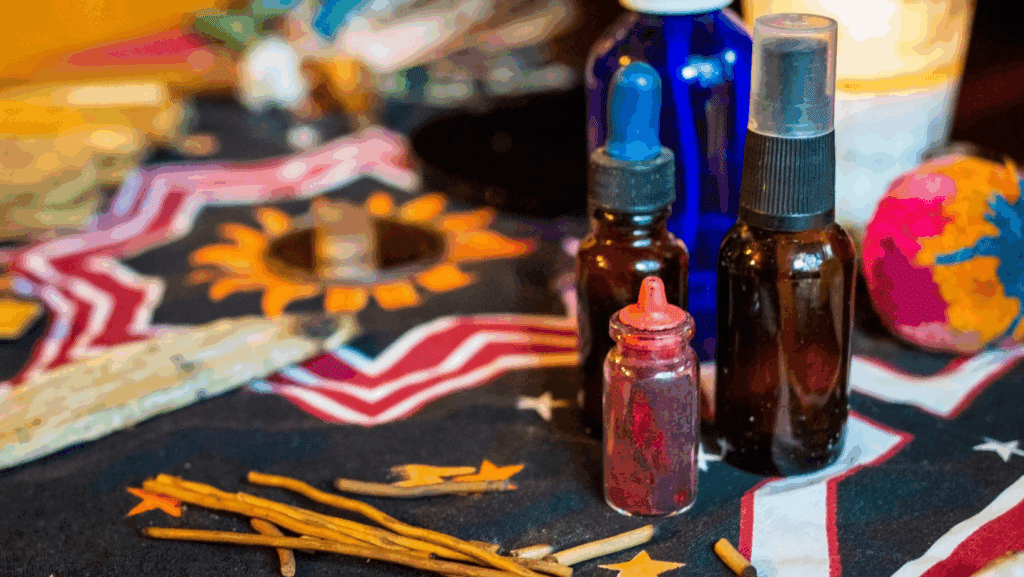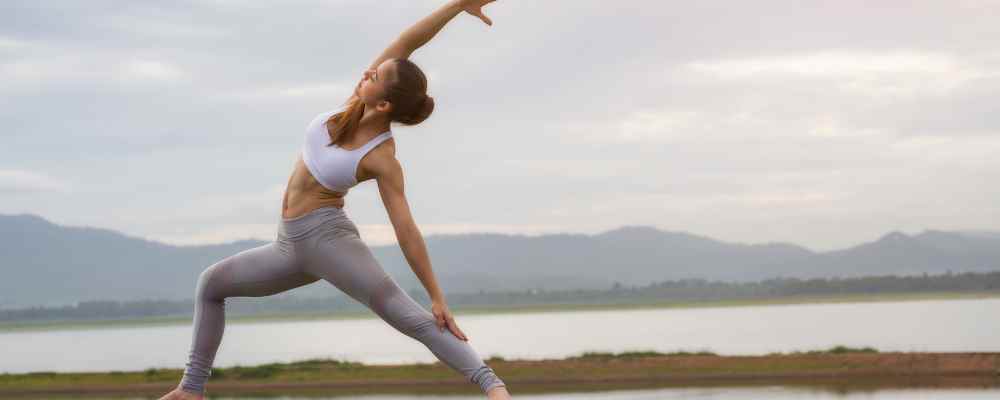From whispers of mystical visions to stories of deep emotional healing, the ayahuasca ceremony has gained global attention as a gateway to self-discovery and transformation. But what actually happens during one of these mysterious rituals? Is it safe? What should you do to prepare? And is it something you should consider for yourself? This guide walks you through everything you need to know — from the moment you step into the ceremonial space to the life-changing insights that can follow — with answers to your most pressing questions about ayahuasca retreats, preparation, safety, and the powerful benefits of this sacred plant medicine.
What Is an Ayahuasca Ceremony?
An ayahuasca ceremony is a sacred ritual centered around the consumption of a powerful psychoactive brew traditionally made from two Amazonian plants: Banisteriopsis caapi (a vine containing MAOIs) and Psychotria viridis (a leaf rich in DMT). The brew is used by various indigenous groups for spiritual and medicinal purposes, often as part of multi-night ceremonies led by shamans or trained facilitators.
The ceremony is not merely about ingesting the plant. It’s a carefully held space — often conducted at night — that involves music, energy work, guided intentions, and physical support, all designed to facilitate a deep inward journey. Participants may face emotions, memories, and sensations buried in the subconscious, with the goal of healing, release, or expanded understanding. In modern settings, ayahuasca is also used therapeutically under the supervision of trained practitioners who integrate indigenous wisdom with psychological frameworks.
Real Benefits of Ayahuasca Plant Medicine
Reported benefits vary, but commonly include:
- Resolution of emotional wounds and trauma
- Reduced anxiety, depression, or addictive behaviors
- A sense of spiritual connection and purpose
- Clarity about relationships, identity, or career
- Increased compassion and self-understanding
- Greater presence in daily life
Some studies have shown long-term improvements in mood and behavior after just a few sessions, especially when combined with integration therapy.
What to Expect in a Typical Ayahuasca Ceremony
While every ceremony is unique depending on the tradition, the facilitator, and the participants, there are key phases that are common across most legitimate retreats.

1. Pre-Ceremony Orientation and Intention Setting
Before the ceremony begins, facilitators often hold an orientation session. This is where the structure of the night is explained, safety protocols are reviewed, and participants are invited to set an intention. Setting an intention is not about controlling the experience but about approaching it with clarity. You might come with a specific question (“Why do I repeat certain patterns?”) or a broad desire (“I want to reconnect with myself”).
This phase also includes grounding rituals, smudging with sage or palo santo, and opening prayers or invocations. The group may be invited to sit in silence, reflect, or share in a circle.
Why this matters: Intention-setting helps frame the inner journey. While the plant may take you in unexpected directions, your conscious focus can help you remain present through difficult or revealing moments.
2. Drinking the Brew
The ayahuasca brew is typically served in small ceramic or wooden cups. It is thick, dark brown, and intensely bitter — most describe the taste as earthy, vinegary, and unpleasant, though tolerable. Participants drink the first dose together or in small groups, then return to their mats. Most ceremonies take place in the dark or dim candlelight to support inward focus.
Timing: The effects of ayahuasca begin between 20 and 60 minutes after ingestion. A second dose is sometimes offered midway through the ceremony if the facilitator feels it is appropriate.
3. Onset of Effects and the Inner Journey
As the brew takes effect, participants may begin to feel physical shifts — warmth, tingling, a rush of energy, or nausea. The mental effects vary significantly: some experience vivid closed-eye visuals, others encounter emotional waves, memories, or symbolic scenes.
Common sensations include:
- A sense of time slowing or collapsing
- Emotional intensity (joy, sadness, fear, awe)
- A feeling of being "shown" inner truths or parts of oneself
- Revisiting key life moments
- A sense of connection to nature, ancestors, or spirit
It’s important to know that not all experiences are visual or ecstatic. Some are subtle, abstract, or even uncomfortable — and that, too, can be part of the healing.
Shamans and facilitators often guide the experience with singing (icaros), drumming, or sound instruments to help shift energy, offer comfort, or anchor participants during challenging moments.
4. The Purge
Vomiting, or "la purga," is a well-known aspect of ayahuasca ceremonies. While Western medicine typically sees vomiting as a sign of illness, in the ayahuasca tradition, it’s understood as a form of energetic release.
Forms of purging:
- Vomiting
- Crying
- Shaking
- Sweating
- Laughing
- Yawning or sighing
- Defecation (less common, but normal)
The purge is not just physical; it often corresponds to the release of emotional or psychological material. Participants often report feeling lighter, clearer, or deeply relieved afterward.
5. Peak Experience and Insight
The peak of the ceremony may last anywhere from 2 to 4 hours. During this time, participants may undergo deeply transformative processes: confronting fears, receiving insight about life choices, resolving past traumas, or experiencing unity with all life.
It’s not uncommon for people to report:
- Encounters with spiritual figures, ancestors, or guides
- Realizations about relationships or behaviors
- A felt sense of forgiveness or self-acceptance
- Visual journeys through nature, space, or symbolic landscapes
These moments can be euphoric, humbling, confusing, or awe-inspiring — and often, all of these at once.
6. Return, Reflection, and Closing
As the effects fade, facilitators typically close the ceremony with final prayers, grounding rituals, or quiet integration. Some groups share tea or fruit. Others move into silence and sleep. Participants often feel sensitive, emotional, or peaceful. It’s common to journal or reflect quietly, though some prefer not to speak until the following morning.
What Not to Expect from an Ayahuasca Ceremony
This, instead, is what you should NOT expect from an Ayahuasca ceremony.
- A predictable outcome. Every ceremony is different. You may not get answers in the way you imagined.
- A purely blissful or beautiful experience. Healing often involves facing discomfort, fear, or grief.
- A psychedelic high. While ayahuasca is psychoactive, it’s not recreational, and rarely “fun.”
- Miraculous overnight healing. Insights need to be integrated over time, with effort and support.
Expect to work with the medicine, not be passively healed by it.
Preparing for the Ceremony
What to Eat Before Ayahuasca
Ayahuasca interacts with the digestive and nervous systems, so preparation is key for safety and comfort. Most retreats recommend following a simplified diet 3 to 7 days prior:
Avoid:
- Red meat and pork
- Alcohol and drugs (including cannabis)
- Aged cheeses and fermented foods (due to tyramine)
- Caffeine, chocolate, and refined sugar
- Spicy or greasy food
- Sexual activity (energy conservation)
Recommended foods:
- Light grains (rice, quinoa, oats)
- Cooked vegetables and fruits
- Herbal teas and water
- Steamed fish (if permitted)
This dieta isn’t just about digestion — it supports clarity, energetic openness, and respectful approach to the medicine.
Psychological and Emotional Preparation
- Journal your intentions and fears
- Meditate or use breathwork to center yourself
- Avoid excessive stimulation (news, social media, screens)
- Let go of expectations and control — come with curiosity
Are Ayahuasca Retreats Safe?
One of the most common questions about Ayahuasca is whether it is safe. The answer is yes, when used under responsible conditions. However, this doesn't mean it is for everyone. Safety depends on several critical factors, including:
- Medical screening: Individuals with heart problems, bipolar disorder, schizophrenia, or those taking SSRIs should not take ayahuasca.
- Skilled facilitators: Choose retreats where facilitators are trained in trauma response, first aid, and traditional use of the medicine.
- Environment: Ceremonies should be held in stable, private settings, with access to support, water, and restrooms.
- Aftercare: Integration support (such as sharing circles, counseling, or integration coaching) is crucial.
Ayahuasca Ceremony in Mexico: A Growing Destination
While Peru remains a traditional hub for ayahuasca, Mexico has emerged as a respected destination offering high-quality retreats with a blend of traditional and therapeutic elements. Reasons people choose ayahuasca retreats in Mexico include:
- Legally protected ceremonies in some indigenous and spiritual contexts
- Accessible locations (Tulum, Cancun, Puerto Morelos)
- English-speaking facilitators with trauma-informed training
- Modern amenities balanced with respect for tradition
- Options for weekend or one-day ceremonies for newcomers
In other words, a more approachable entry point for those new to plant medicine.
One-Day Ayahuasca Ceremonies: Pros and Cons
A one-day ayahuasca ceremony can provide a meaningful introduction, but it’s important to understand the limitations:
Pros:
- Lower time and financial commitment
- Can be a safe “first step” into the experience
- Allows you to gauge how your body and mind respond
Cons:
- Less time for preparation and integration
- It may be overwhelming without extended support
- Risk of returning to daily life too quickly without processing
Always choose facilitators who offer post-ceremony support, even for short retreats.
Experience Ayahuasca Safely with Aloee Wellness in Mexico

Ayahuasca is not a miracle cure or spiritual shortcut. It’s a powerful catalyst for healing, growth, and self-inquiry — but only when approached with respect, intention, and preparation. Take your time to find the right setting, the right facilitators, and the right moment in your life. With responsible guidance and a willingness to integrate the experience into daily life, an ayahuasca ceremony can become not just a profound memory but a turning point.
If you feel called to explore ayahuasca in a safe, grounded, and integrative way, Aloee Wellness offers carefully curated ceremonies in Mexico that honor both the ancestral roots and the psychological depth of this sacred medicine. Aloee Wellness collaborates with highly trained facilitators and experienced medicine carriers, ensuring each participant is supported physically, emotionally, and spiritually throughout their journey.
What Sets Aloee Wellness Apart:
- Trauma-informed facilitators trained in traditional and clinical frameworks
- Small, intimate groups for personal attention and safety
- Pre-ceremony preparation and post-ceremony integration support
- Bilingual team (English & Spanish) to ensure clear communication
- Options for weekend retreats and one-day ceremonies for different levels of readiness
Whether you’re seeking emotional healing, spiritual insight, or a deeper sense of connection, Aloee Wellness offers a respectful and nurturing environment for your inner work. Their retreats are designed not as escapes, but as intentional containers where you can meet yourself more fully and return to life with clarity and purpose.
? To learn more or inquire about upcoming ceremonies, visit Aloee Wellness.


